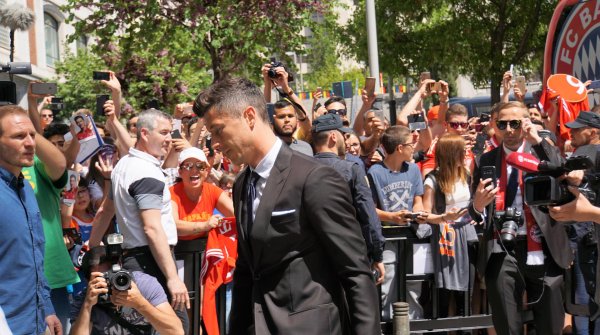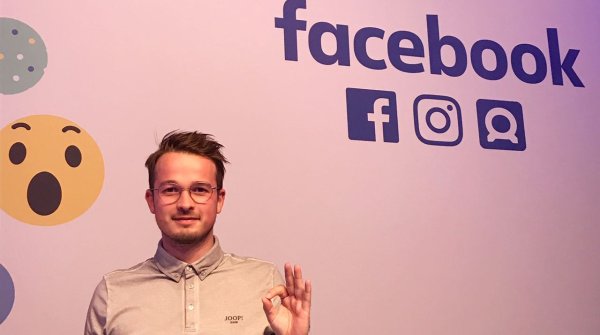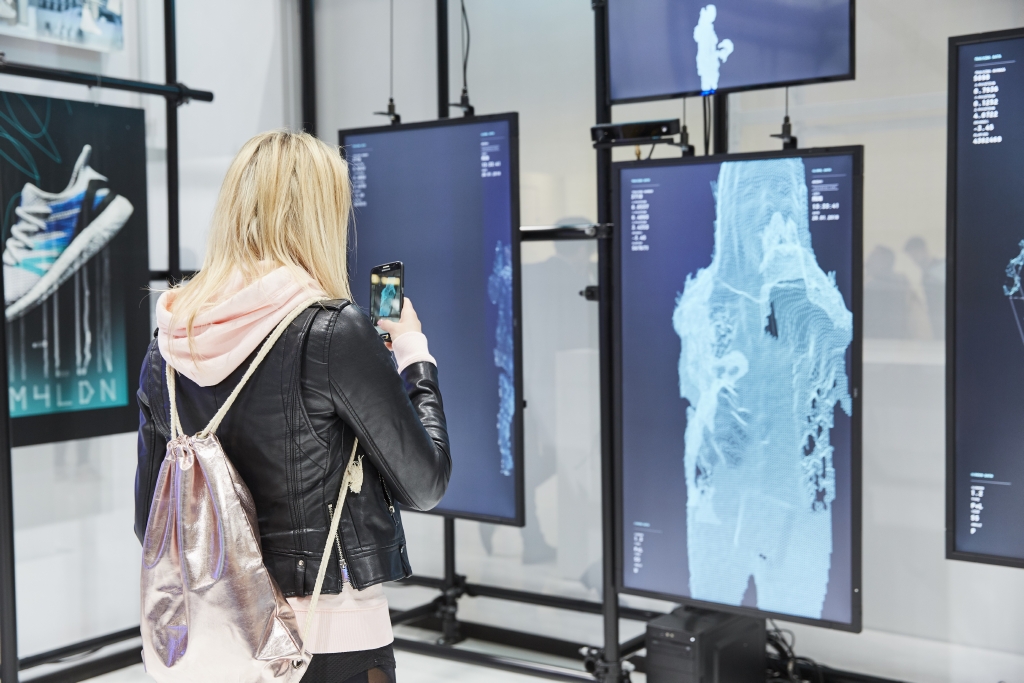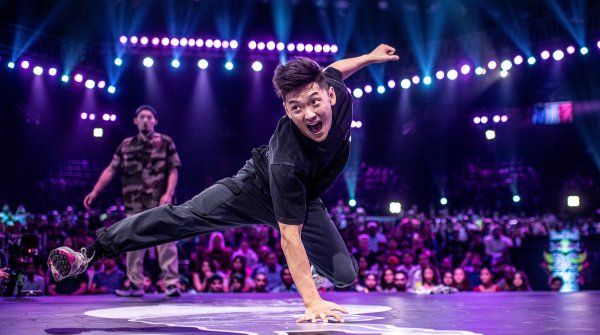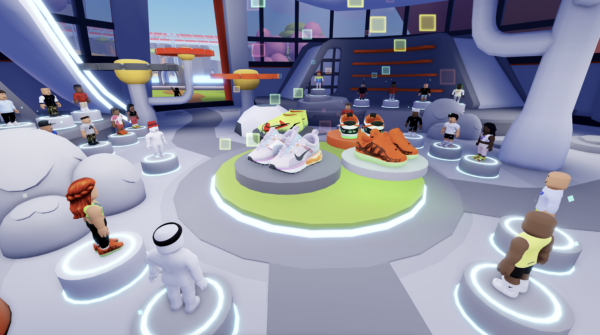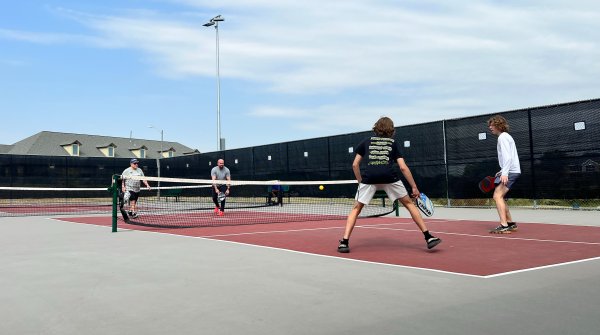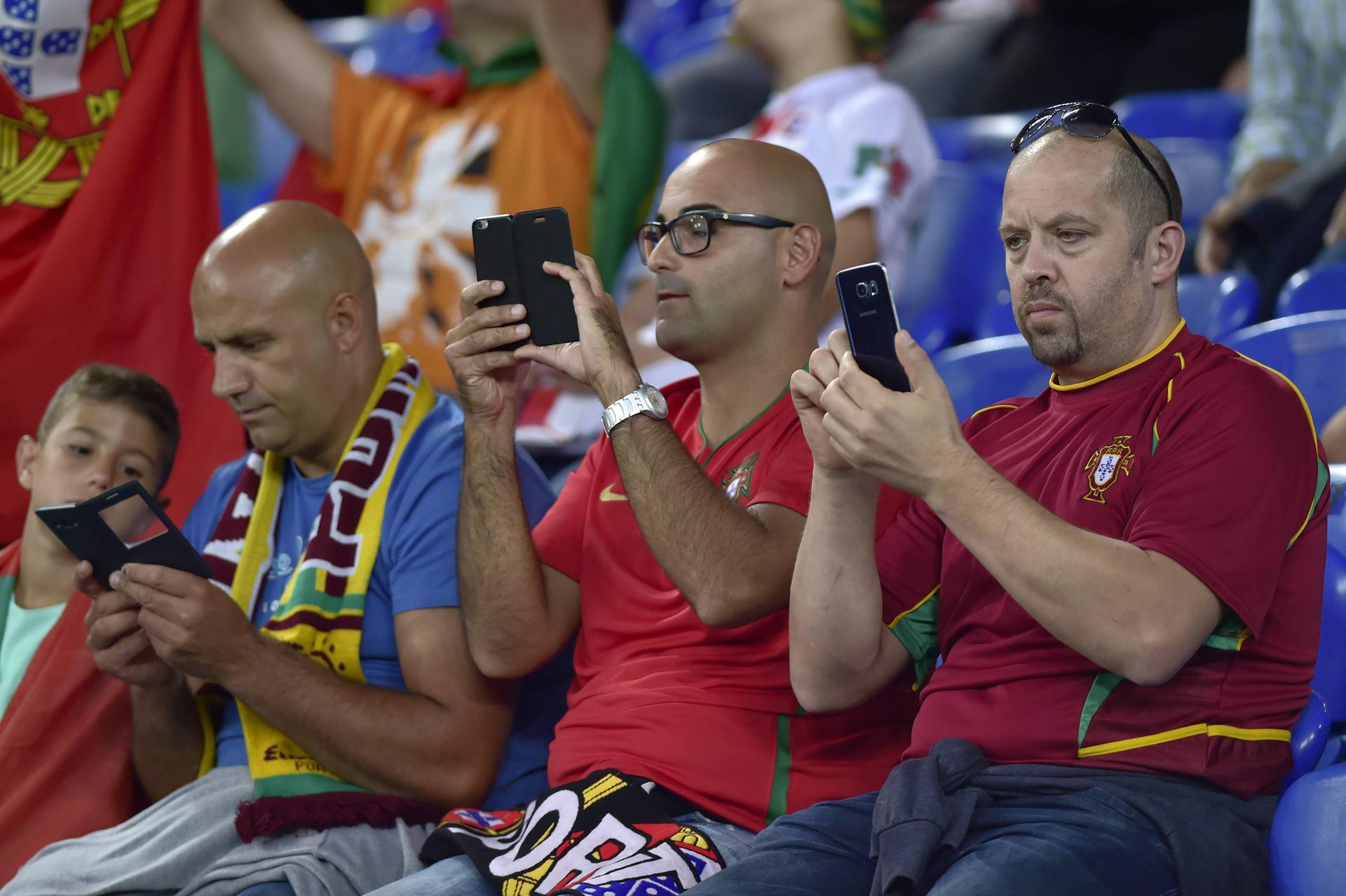
The German record champion once more provided a taste of what will be possible in the future with a science fiction press conference to mark the Audi Cup.
Holography press conference with FC Bayern
Carlo Ancelotti physically sat in a darkened room at the soccer world premiere of the extraterrestrial kind. Suddenly, as if by magic, Jürgen Klopp and Diego Simeone appeared in the seats next to the Bayern manager. A lifelike-looking hologram. “Still a bit strange. I’ve seen Star Trek, and I feel as though I were beamed to Munich,” said Jürgen Klopp.
He was joined in from Liverpool, Diego Simeone from Madrid. The two “hologram coaches” answered journalists’ questions like it were any other press conference; even their facial expressions and gestures were clearly recognizable. “It’s not that different than a normal press conference, actually quite close to reality.
I just keep looking into one camera,” Klopp reported from England. Bayern coach Ancelotti immediately recognized the practical benefits: “We save time this way. We can do more press conferences.”
Entire soccer games in stadiums thousands of kilometers away as a hologram
The technology of the future has actually been finding its way into professional soccer for some time now. Technically, it’s already possible to translate entire soccer games into holograms and project them into stadiums thousands of kilometers away. Japan promised precisely that in its bid for the 2022 World Cup, thereby aiming to have multiple World Cup games take place in various stadiums at the same time.
The land of the rising sun didn’t win the bid – however, the still quite expensive technology will win through. For the big clubs, stars, and associations especially, it’s ultimately about further boosting rapidly climbing sales through internationalization, digitization, and e-commerce.
Professor Sascha L. Schmidt, chairholder and head of the Center for Sports and Management (CSM) at the Otto Beisheim School of Management, sees professional soccer on the cusp of the third phase of the digital transformation. “The Internet of Things, smart wearables, and sensors are finding their way into the digital arenas. Added to that are augmented and virtual reality, artificial intelligence, and machine learning.
New options are opening up here specially for fans. For global soccer brands like Real Madrid, FC Barcelona, Manchester United, Bayern Munich, and Borussia Dortmund, only a fraction of supporters ultimately have the opportunity to see a game live in the stadium. Virtual reality, for example, can get even fans in the US or Asia relatively close to the live experience.”
Smartphone apps, data glasses, performance statistics in real-time
Games broadcast via hologram technology thousand of kilometers away are one option. In the future, fans will be able to rejoice over further, almost endless opportunities to follow their favorite teams. Using smartphone apps, data glasses, or special contact lenses, it will be possible to access the performance statistics of each individual player in real-time.
The technical upgrades of the top clubs are making it possible. Even today, training players run across the field with GPS vests that can precisely plot their paths. In the future, skin screens will measure heartrate while players even swallow microchips. Professional soccer can no longer be imagined without Big Data.
“Micro cameras, sensors, and wearables record all performance data at any time, while running paths and plays are captured and made evaluable via drones. Beyond that, clubs like TSG Hoffenheim or Borussia Dortmund have been working with Footbonauts for quite some time. These are small soccer arenas with intelligent ball machines that, under laboratory conditions, make players’ technical and reactive abilities measurable and comparable.
This opens up access to more objectifiable parameters in the transfer business, for example. You don’t have to be a prophet to say that clubs who don’t make use of these kinds of technical opportunities will be left standing in the future,” believes the expert Schmidt, in an interview with digtator.de. In the future, Bundesliga fans will probably be able to reserve their parking spot for the game and have food and drinks served at their seats via stadium apps.
In the US, some of the future technologies are already a reality for sports fans. In the stadium app for Kansas City, you can access statistics and even follow the coach’s locker room halftime speech live. With the San Francisco 49ers, fans can use augmented reality to virtually interact with the players.
On the hunt for your long awaited sports dream job? We have the right job offers >>>>
These are becoming more and more the brand: It’s also a trend. Cristiano Ronaldo has over 120 million fans on Facebook, over 100 million on Instagram – with one news post on social media, he reaches more people than his club does via classic media.
FC Bayern: Social media offers for every continent
This is why Bayern Munich is already working with target group-specific social media offers for every continent. Schmidt: “The sport is the clear focus in Germany, while it’s the staging of the Bayern stars in China. There, the stories from Thomas Müller’s wife’s horse stables are at least just interesting as the twinges in the striker’s calf.”
Read “My Sports Job” here: Felix Loesner, responsible for FC Bayern’s Facebook, Instagram, etc. >>>
The clubs will definitely evolve more into content houses. These days it comes more and more down to integrating data analytics into your business model, in the field of athletic development as well as in marketing and internationalization.” Schalke 04 has even founded its own e-sports department, and is on the move with teams in various computer games.
The soccer event is thus increasingly taking place outside the actual event in the stadium. Even you can become a star without being a star in a top club. The chubby Dutchman Bas van Velzen got hundreds of thousands of views on YouTube because he can shoot terrific free kicks. He has his own merchandising line, and invited world stars like Drogba and Mario Balotelli to compete against him. A crazy new world of soccer.

